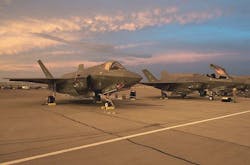U.S. forces suffering heavy losses in simulated wars, increasing perceived threats to world order
WASHINGTON – The U.S. keeps losing, hard, in simulated wars with Russia and China. Bases burn. Warships sink. But we could fix the problem for about $24 billion a year, one well-connected expert said, less than four percent of the Pentagon budget. Breaking Defense reports. Continue reading original article
The Military & Aerospace Electronics take:
8 March 2019 -- “In our games, when we fight Russia and China,” RAND analyst David Ochmanek says, “blue gets its ass handed to it.” In other words, in RAND’s wargames, which are often sponsored by the Pentagon, the U.S. forces — colored blue on wargame maps — suffer heavy losses in one scenario after another and still can’t stop Russia or China — red — from achieving their objectives, like overrunning U.S. allies.
No, it’s not a Red Dawn nightmare scenario where the Commies conquer Colorado. But losing the Baltics or Taiwan would shatter American alliances, shock the global economy, and topple the world order the U.S. has led since World War II.
F-35 stealth fighters are hard to kill in flight, but lined up on the runway, they’re easy targets. How could this happen, when we spend over $700 billion a year on everything from thousand-foot-long nuclear-powered aircraft carriers to supersonic stealth fighters? Well, it turns out U.S. superweapons have a little too much Achilles in their heels.
Related: Electronic warfare: the cat-and-mouse game continues
Related: Focusing the military's weather eye
Related: Military organizes for cyber warfare
John Keller, chief editor
Military & Aerospace Electronics
Ready to make a purchase? Search the Military & Aerospace Electronics Buyer's Guide for companies, new products, press releases, and videos

